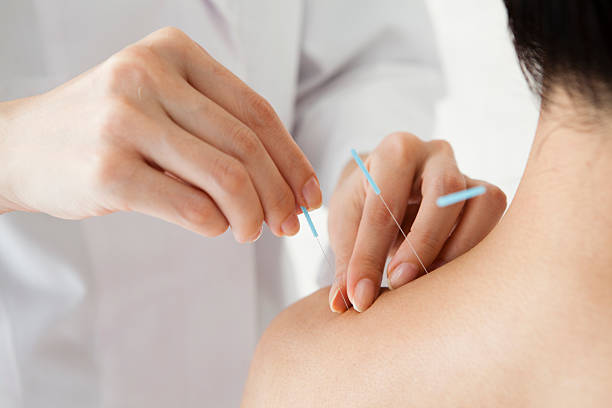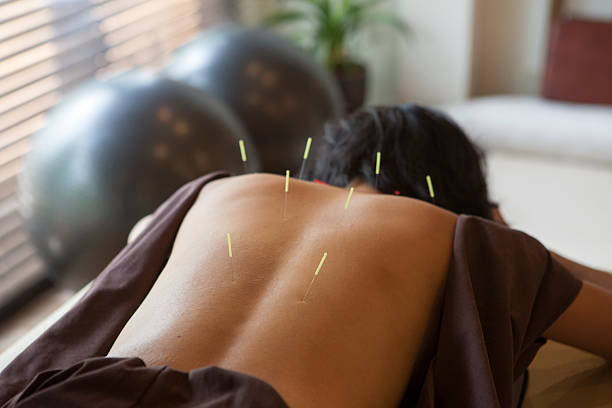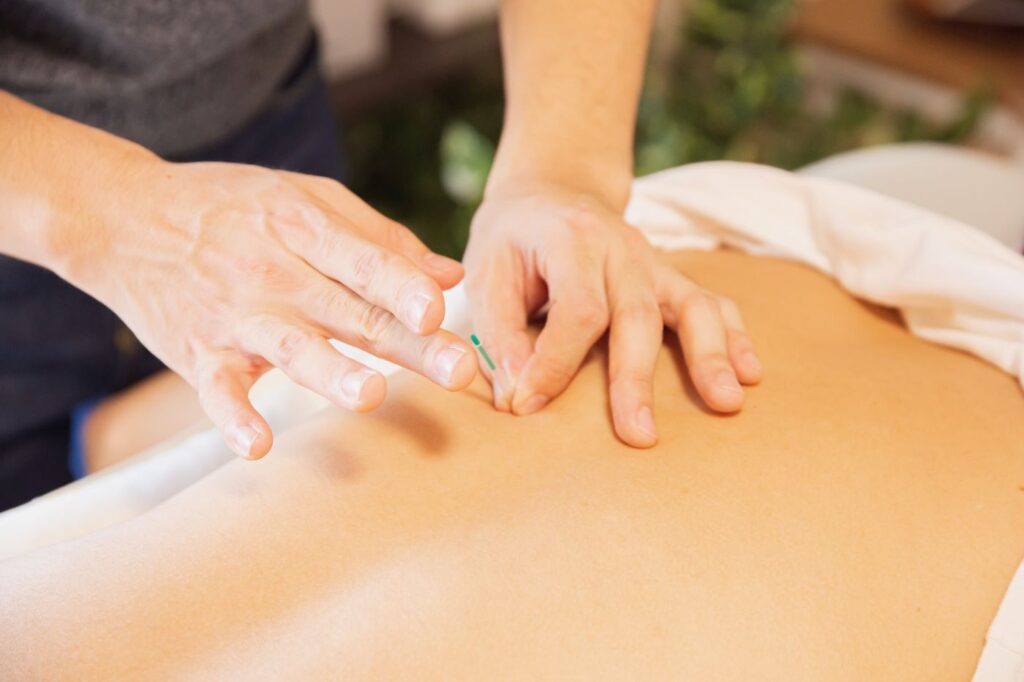Alternative Treatments
Is Acupuncture Good For Osteoarthritis
Acupuncture is a type of traditional Chinese medicine that has been used for millennia to treat a variety of ailments, including osteoarthritis. This technique includes inserting small needles into certain spots on the body to enhance the passage of energy and facilitate healing. But can acupuncture truly work for osteoarthritis?
Some studies suggest that acupuncture may have some benefits for persons suffering from osteoarthritis. For example, a research published in the Journal of the American Medical Association discovered that acupuncture was more successful than sham acupuncture (placebo treatment) in lowering pain and improving physical function in persons with knee osteoarthritis. Another study published in the Annals of Internal Medicine discovered that acupuncture was more effective than standard therapy for lowering pain and improving function in persons with persistent knee pain.
While these trials indicate that acupuncture could be a potential treatment for osteoarthritis, additional study is needed to completely understand its benefits and limits. It’s crucial to understand that acupuncture is not a cure for osteoarthritis and may not be effective for everyone. However, for those looking for a non-invasive, drug-free alternative to manage their osteoarthritis symptoms, acupuncture may be worth exploring.

Understanding Acupuncture and Osteoarthritis
The Basics of Acupuncture
It is a traditional Chinese medicinal method that includes inserting fine needles into particular spots on the body. The technique is based on the notion of Qi (pronounced “chee”), which is thought to be the vital energy that travels through the body via meridians. Also it is supposed to regulate the flow of Qi and facilitate healing.
Needles are incredibly thin and flexible, and they are normally only put a few millimeters into the skin. It is typically regarded as safe when conducted by a trained practitioner with sterilized needles.
Osteoarthritis: Symptoms and Causes
Osteoarthritis, a degenerative joint condition, affects millions of individuals worldwide. It occurs when the cartilage that cushions the joints begins to degrade, resulting in discomfort, stiffness, and inflammation. Osteoarthritis can affect any joint in the body, but it is most often found in the knees, hands, and hips.
The symptoms of osteoarthritis vary according on the severity of the ailment, but they usually include joint pain, stiffness, and swelling. In rare circumstances, osteoarthritis can produce a grinding or popping feeling in the afflicted joint.
The specific etiology of osteoarthritis is unknown, however it is believed to be caused by a combination of factors such as age, genetics, and joint injury or overuse. There is presently no cure for osteoarthritis, however there are several therapies available to assist manage symptoms and delay the disease’s progression.
While some data suggests that acupuncture may be useful in the treatment of osteoarthritis, additional research is needed to fully understand its effectiveness. Some studies have suggested that acupuncture can help reduce pain and increase mobility in persons suffering from knee osteoarthritis, while others have found no substantial benefits. Overall, consult with a healthcare physician to see if acupuncture is a viable therapy choice for your individual problem.

Efficacy of Acupuncture for Osteoarthritis
It is a traditional Chinese medicinal method in which tiny needles are inserted into particular spots on the body. It’s been used for millennia to cure a variety of ailments, including osteoarthritis. In recent years, there has been an increase in scientific research and evaluations on the effectiveness of acupuncture for osteoarthritis.
Scientific Research and Reviews
A comprehensive review and meta-analysis published in Evidence-Based Complementary and Alternative Medicine discovered that acupuncture was beneficial at relieving pain and improving physical function in osteoarthritis patients. The study examined 16 randomized controlled studies and found that acupuncture was a safe and effective treatment for osteoarthritis.
Another research published in the Cochrane Database of Systematic Reviews discovered that acupuncture was more effective than sham acupuncture and no acupuncture in relieving pain and increasing physical function in patients with knee osteoarthritis. The analysis examined 39 randomized controlled studies and concluded that acupuncture was a viable treatment for osteoarthritis.
Pain Relief and Function Improvement
It has been demonstrated to promote the release of endorphins, the body’s natural painkillers. This can alleviate the persistent discomfort associated with osteoarthritis. Acupuncture points are thought to be positioned along channels or meridians related to specific organs or systems in the body. Acupuncture, by stimulating these sites, can help the body regain equilibrium and improve physical function.
While some research have suggested that the placebo effect may influence the efficacy of acupuncture, the majority of studies have found that acupuncture is an effective treatment for osteoarthritis. If you’re thinking about using acupuncture to treat osteoarthritis, you should look for a qualified practitioner who has experience with the ailment.
In conclusion, scientific research and reviews indicate that it is an effective treatment for osteoarthritis. It can relieve pain and improve physical function by boosting endorphin release and restoring bodily equilibrium.

Acupuncture Treatment Process
At our clinic, we provide acupuncture as a supplemental treatment for osteoarthritis. Acupuncture is the insertion of tiny needles into precise sites on the body to activate the body’s own healing response. Here’s what to expect during an acupuncture session:
What to Expect During a Session
During your first appointment, your certified acupuncturist will do a complete assessment of your health and medical history in order to create a specific treatment plan. This plan will specify the number of sessions required as well as the parts of your body that will be treated.
After the evaluation is completed, you will be requested to lie down on a comfortable treatment table. Your acupuncturist will next implant the needles into the specific parts of your body. You may have a tingling sensation or a minor soreness while the needles are inserted, but this should not be uncomfortable.
After the needles are implanted, you will be asked to relax for 20-30 minutes while they perform their magic. Some acupuncturists may also do electro-acupuncture, which involves attaching electrodes to the needles and delivering a mild electric current through them. This can provide further pain relief and may be advised in some circumstances.
Aftercare and Treatment Frequency
Following your session, your acupuncturist will give you aftercare recommendations. You may be recommended to refrain from heavy exercise for a few hours and drink plenty of water to help flush out any toxins generated during treatment.
The frequency of your acupuncture treatments will be determined by your specific needs and the severity of your osteoarthritis symptoms. Some people may require weekly sessions, whereas others may just require treatment once every month. Your acupuncturist will work with you to create a treatment plan that is suited to your individual requirements.
At our clinic, we put your safety and comfort first during acupuncture therapy. While some patients may develop minor side effects including bruising, pain, or tingling at the needle insertion sites, major complications like hemorrhage or infection are uncommon. If you have any questions about the safety or efficacy of acupuncture treatment, please speak with your physician.

Comparing Acupuncture with Other Treatments
There are several options for treating osteoarthritis. In this part, we’ll compare acupuncture to other therapies to determine how it measures up.
Acupuncture vs. Medication
Many patients with osteoarthritis use medicine to relieve discomfort. However, there are worries about the long-term usage of anti-inflammatory medications. It is a non-pharmacological option for pain management. In fact, a systematic evaluation published in the Journal of Pain discovered that it was as effective as standard analgesics in treating osteoarthritis pain.
Acupuncture and Physical Therapy
Physical treatment is frequently suggested for patients with osteoarthritis, but it can be time-consuming and costly. It is a supplemental treatment to physical therapy. A network meta-analysis of 22 physical interventions indicated that acupuncture was just as beneficial as muscle-strengthening exercise, Tai Chi, and aerobic exercise in treating osteoarthritis knee pain.
Alternative Approaches and Their Efficacy
There are several alternative treatments for osteoarthritis, including chiropractic care, massage therapy, and herbal supplements. However, the effectiveness of these treatments is not well proven. Acupuncture, on the other hand, has been studied extensively and shown beneficial in the treatment of osteoarthritis pain.
Overall, it can be an effective component of a comprehensive osteoarthritis therapy regimen. It is crucial to note that not all health insurance policies cover acupuncture, so consult your doctor before beginning any treatment plan. Furthermore, Western medicine principles should be followed to ensure that people with osteoarthritis have the highest quality of life possible.
Conclusion
One of the remarkable aspects of acupuncture’s impact on osteoarthritis is its ability to address both the physical and energetic dimensions of discomfort. The insertion of fine needles into specific points on the body, guided by the principles of traditional Chinese medicine, has ushered in a sense of balance and harmony. This nuanced approach aims not only to alleviate pain but also to restore the flow of vital energy, known as Qi, promoting overall well-being.
Throughout my acupuncture sessions, I’ve experienced a profound sense of relaxation and relief. The strategic placement of needles, often targeting areas associated with joint pain and inflammation, has provided a tangible reduction in discomfort. The gentle, yet targeted, nature of acupuncture has emerged as a soothing balm for the stiffness and soreness that often accompany osteoarthritis.
Engaging in acupuncture has not only been a physical experience but also a journey into mindfulness and self-awareness. The meditative ambiance of acupuncture sessions, coupled with the intentional focus on the present moment, has provided a mental sanctuary. This mindful aspect has extended beyond the treatment room, influencing how I approach stress and manage the emotional dimensions of living with osteoarthritis.
Journey of self discovery


